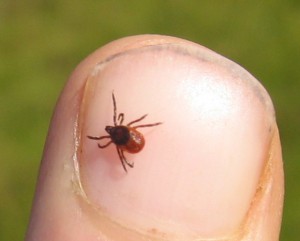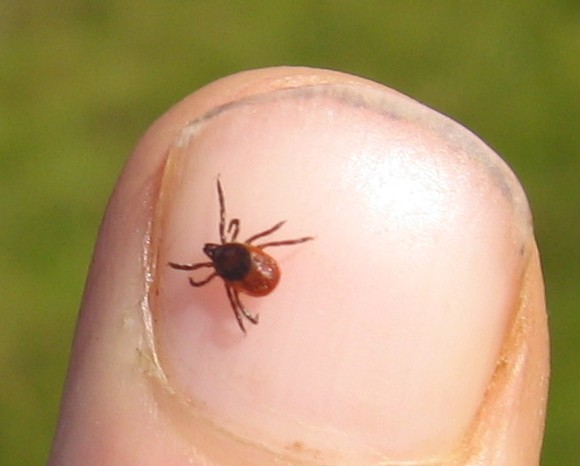
Suffolk County lawmakers have ordered the public works department to devise a plan to combat ticks carrying Lyme disease in the panel’s latest effort to address what they termed an epidemic on eastern Long Island.
The 19-member, Democrat-controlled county legislature passed the resolution Tuesday with 15 votes and one abstention. The bill requires the county Division of Vector Control, which sprays for mosquitoes that carry West Nile virus, to draft a plan to also combat tick-borne Lyme disease by next year.
“We need to adapt vector control to deal with this growing epidemic,” said Legis. Jay Schneiderman (I-Montauk), who introduced the legislation. “I’m going to leave it to the professionals to come up with the best plan.”
About 300,000 Americans are diagnosed annually with Lyme disease carried by deer ticks with the most instances occurring in the Northeast, according to the U.S. Centers for Disease Control. More than 95,000 cases have been reported in New York State since 1986, according to the state Department of Health.
The public is 300 times more likely to be infected by the bacteria that causes Lyme disease than West Nile virus, according to language in the bill. The state health department reported 14 West Nile cases in Suffolk last year while there were reportedly 690 Lyme disease cases for the same county and time period. Lyme disease can lead to cognitive difficulties and severe fatigue, among other symptoms.
READ: Chronic Lyme Disease: A Guessing Game
Schneiderman said the plan could include controlled burns of select wild areas, widening park trails to lessen the public’s exposure to overgrown areas where ticks thrive and improving public education. He noted that he was skeptical of spraying pesticides to deal with the ticks.
Before the vote, members of the public—including some diagnosed with Lyme disease—rallied at the legislature to urge passage of the resolution, although lawmakers were divided over how to deal with deer, which are among the wildlife that carry such ticks.
Some supported culling the deer population while others suggested wide use of a device used on Shelter Island and Fire Island called 4-Poster, which rolls anti-tick pesticides onto deer by luring them to strategically placed corn feed bins. One lawmaker cautioned that using pesticides on deer that local hunters eat could also be problematic.
Gilbert Anderson, commissioner of Suffolk’s Department of Public Works, said his vector control staff has worked with the New York State Department of Conservation to fight ticks in the past.
“There’s no easy fix,” he said, adding that it’s “going to take some time and probably quite a bit of money.”
The bill’s passage comes a day after New York State Senate leaders announced the creation of the Senate Task Force on Lyme and Tick-Borne Disease that will study state and federal efforts to date and issue recommendations on improving prevention, diagnoses and treatment.
“Far too many people continue to suffer the effects of tick-borne illnesses, demonstrating a need for further action,” said Sen. Kemp Hannon (R-Garden City), who co-chairs the task force. “The consequences of undiagnosed, misdiagnosed, untreated and mistreated infections from ticks can be serious and debilitating.”





























